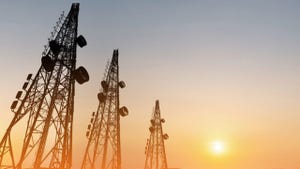2G's staying power writ large in VMO2's 'network evolution' plan
There's life in the old dog yet, as Virgin Media O2 (VMO2) shared the continued – albeit diminished – role that 2G will play over the next few years.
July 23, 2024

In a blog post about the operator's network evolution plan, CTO Jeanie York revealed that today, less than 1% of customers use 2G-only devices, and the network carries less than 0.1% of data traffic. As a result, VMO2 plans to migrate remaining users away from 2G from next year.
But the network won't be turned off completely.
"In fact, we expect to continue operating it for several years and it will play an important role in carrying emergency calls in more remote areas without 4G coverage," she wrote. "We'll also use it to support data traffic for smart energy meters, contributing to the UK's transition to a lower-carbon economy."
It was agreed in late 2021 between operators and government that 2G will be phased out by 2033 at the latest, so there is nothing particularly revelatory about what VMO2 is saying. However, it is interesting to get some insight from an operator about how its 2G network is still being used, and how it will continue to be used during its twilight years.
VMO2 is currently the wide area networking provider for the southern England and Wales regions of the UK's smart metering service. Smart meters send readings over 2G, or in the case of newer models, 2G and 3G. Depending on the model, they either connect directly to the network or via a home hub. It stands to reason then that VMO2 wants to give affected users – and their energy suppliers – sufficient time to upgrade to new meters.
Meanwhile the need for emergency call coverage highlights the travails of the UK's ambitious but troubled shared rural network (SRN) programme. It aims to blanket 95% of the country's landmass in 4G by December 2025, but is at risk of missing its target.
It is testament to 2G's ubiquity and reliability that it still underpins vital use cases in the era of overhyped tech like generative AI (GenAI) and metaverse before that.
According to Ericsson's Mobility Report, the number of legacy IoT connections – meaning 2G or 3G – has only just passed its peak.
There were 900 million in 2023, equal to 26% of global cellular IoT connections. That number is expected to fall to 800 million this year, before dwindling to 200 million by 2029. Given that most 3G networks will have been switched off by then, chances are a lot of these holdouts will be using 2G.
Indeed, by comparison, the sunsetting of 2G's successor, 3G, is almost complete in the UK. Vodafone and EE finished switching off their respective networks in late February, while Three is on course to complete its shutdown by the end of this year. VMO2 will switch off 3G in 2025.
"We've recently completed successful switch off trials," said York "We remain on track to switch off the service next year – a move that will reduce our energy consumption and allow us to shift resources to more efficient 4G and 5G technologies."
Meanwhile, by the time the UK's last 2G network goes dark, the technology will have been in commercial service for more than 40 years. Now that's good value for money.
About the Author
You May Also Like


.png?width=300&auto=webp&quality=80&disable=upscale)







.png?width=300&auto=webp&quality=80&disable=upscale)


_1.jpg?width=300&auto=webp&quality=80&disable=upscale)